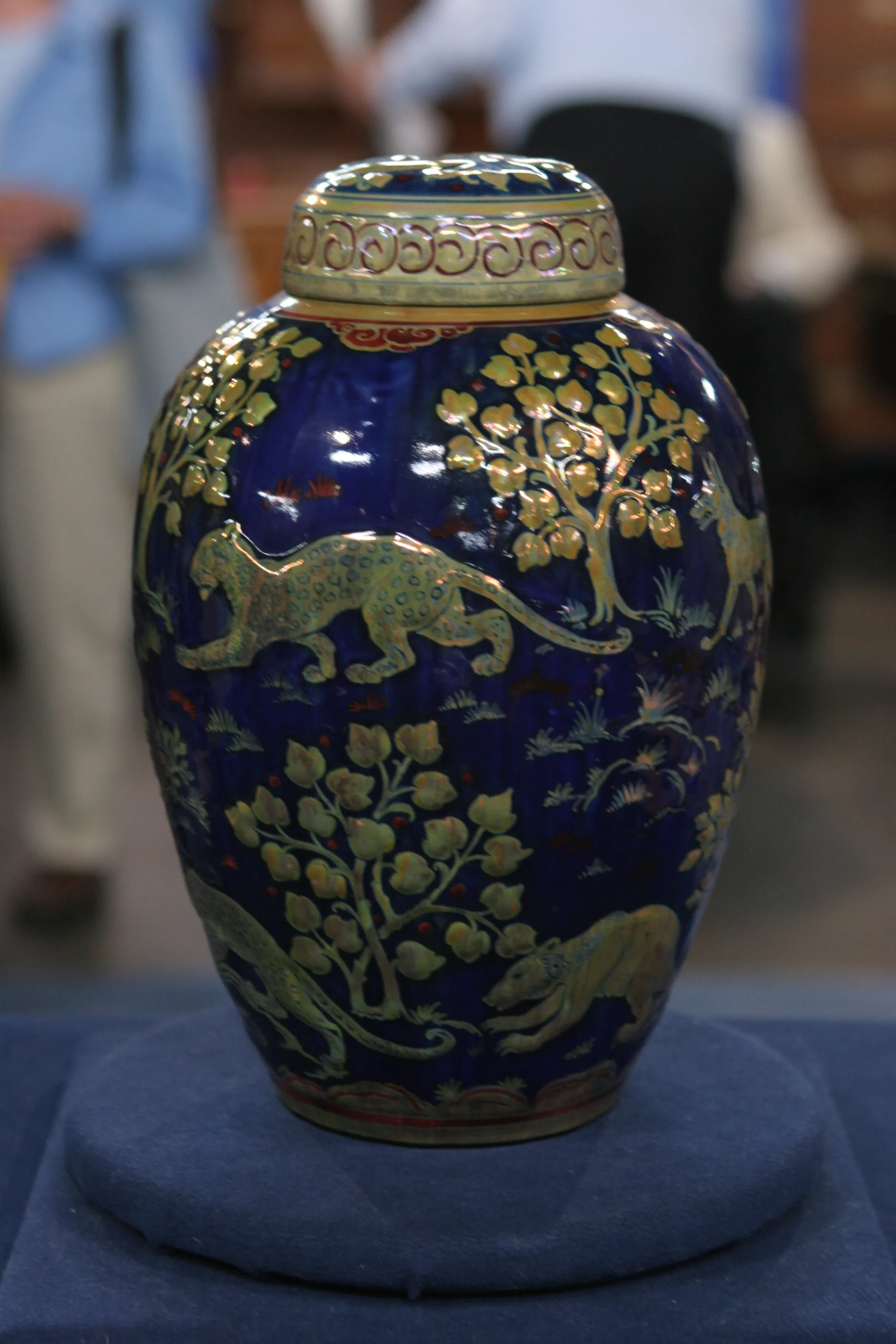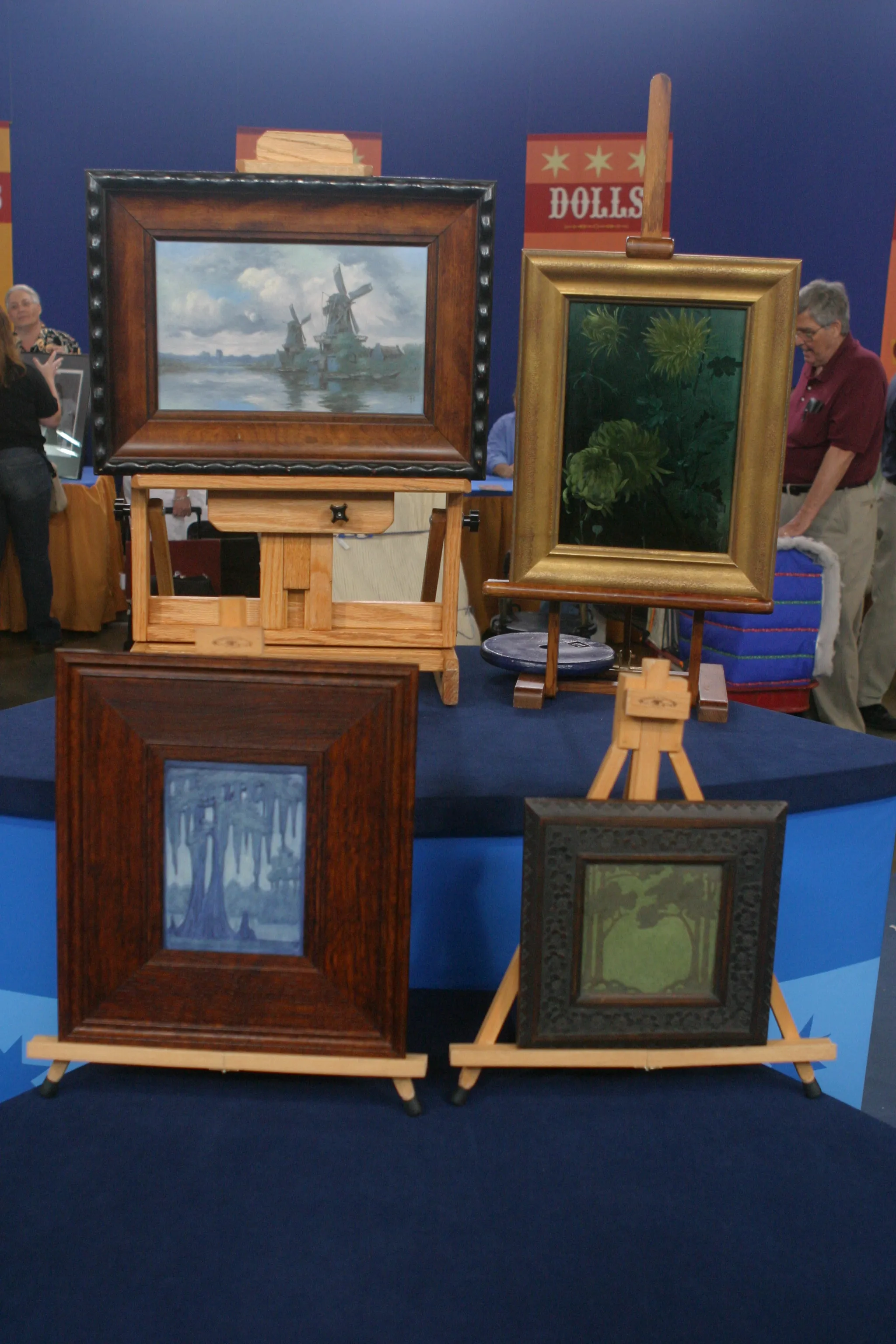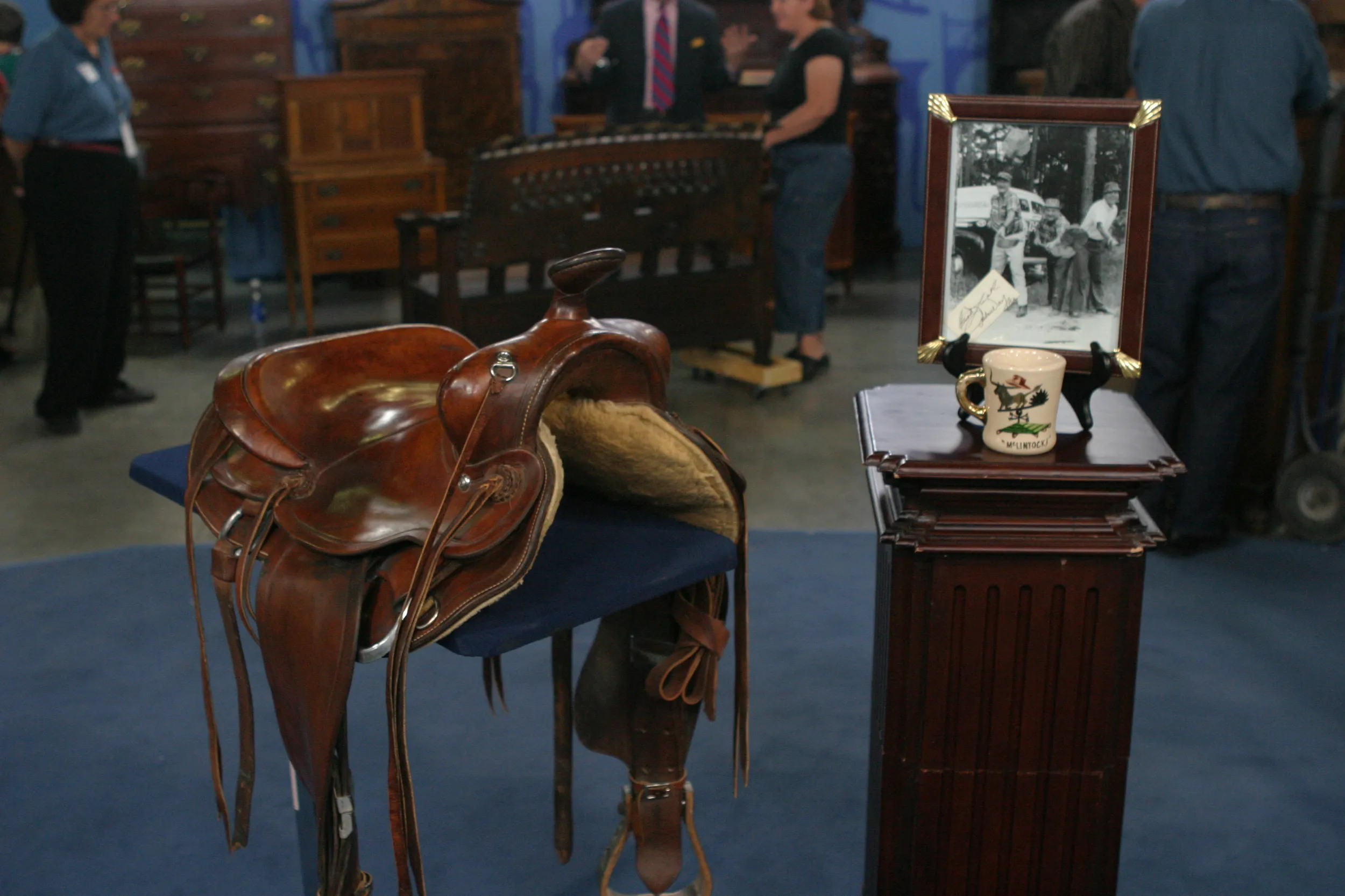GUEST: My father did some electrical work for a Chinese gentleman in Washington, DC, back in the 1950s, and in payment for the work, he gave him some art objects, and this was one of them. And he told my father that when he left China, he was not allowed to bring any money, so he brought pieces of art.
APPRAISER: The main feature of this vase is how beautifully painted the decoration is. This baluster shape is a shape that you find in the 18th century, and later. This tip of the handle, it's an S scroll handle, is in the form of what's called a lingzhi, L-I-N-G-Z-H-I, which is a type of mushroom. And this has a connotation of long life and good luck. Suspended from it is what you called a swastika. Well, it's not.
GUEST: Okay.
APPRAISER: It's actually called a wan symbol, and a wan symbol is symbolic of good luck.
GUEST: Okay.
APPRAISER: Now, suspended from that, you see two fish-- twin fish. That's also a symbol of good luck. And then suspended from this beautiful sort of coral painted cord is this little pendant, and then there's a tassel at the end. That's a Buddhist emblem. So all these together are symbolic of long life, good luck, prosperity. One of the important things is to always look at the mark. That mark says that this was made between 1736 and 1795.
GUEST: Oh, my.
APPRAISER: However-- and I don't want you to get too excited-- because it actually doesn't date to that period.
GUEST: Oh, okay.
APPRAISER: All right?
GUEST: (laughing) Yeah.
APPRAISER: Now, if it did, we'd be looking at something that'd be worth literally $3 million or $4 million.
GUEST: (blows air, laughs) Whoa.
APPRAISER: All right? However, when this was made, when the last dynasty of the Chinese empire fell in 1911, there were many of the factory workers who were producing items in the imperial kilns. Those objects often have date marks, reign marks on the underside, and are in the shapes and forms of something that would have been from the Imperial Palace in the 18th century, but they were actually made in the 1920s or '30s.
GUEST: I see.
APPRAISER: And that's when this was made. They've taken a traditional 18th-century shape and design, but it's been updated.
GUEST: Right.
APPRAISER: So it was not intended to be a fake.
GUEST: I see.
APPRAISER: Now, if you had come to me ten years ago and said, "Lark, what is this worth?" I would have said, "You know, it's really pretty, and it's not worth a lot." But what's happened today is, China has become very prosperous. There are people that are collecting 18th-century items that are originals. There are also people looking to collect the copies from this particular period because they're so nicely done. So as a consequence, it's actually worth at auction, today, $8,000 to $12,000.
GUEST: Oh... I am really surprised and delighted. (laughs)











